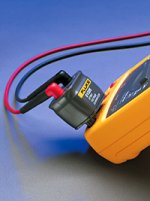So the other day I took a 9V battery, an analog multimeter, a digital multimeter and a 1M ohm resister and I did an experiment. First I tested the voltage of the battery with both multimeters. Both read 9.6v. Then I took the 1M ohm resister and put it on the positive battery terminal. Next I put the analog multimeter in series. It read about 0.1V. Then I took the digital multimeter and repeated the exercise. It read 9.6v. My question is why? It is my understanding that resistance reduces voltage, not just current, so why would the digital multimeter give me the same voltage reading regardless of the resistance in series with it? I tried numerous other resistors and they all affected the analog meter, but not the digital meter. I tried a second true RMS multimeter and came up with the same results.
Last edited:







